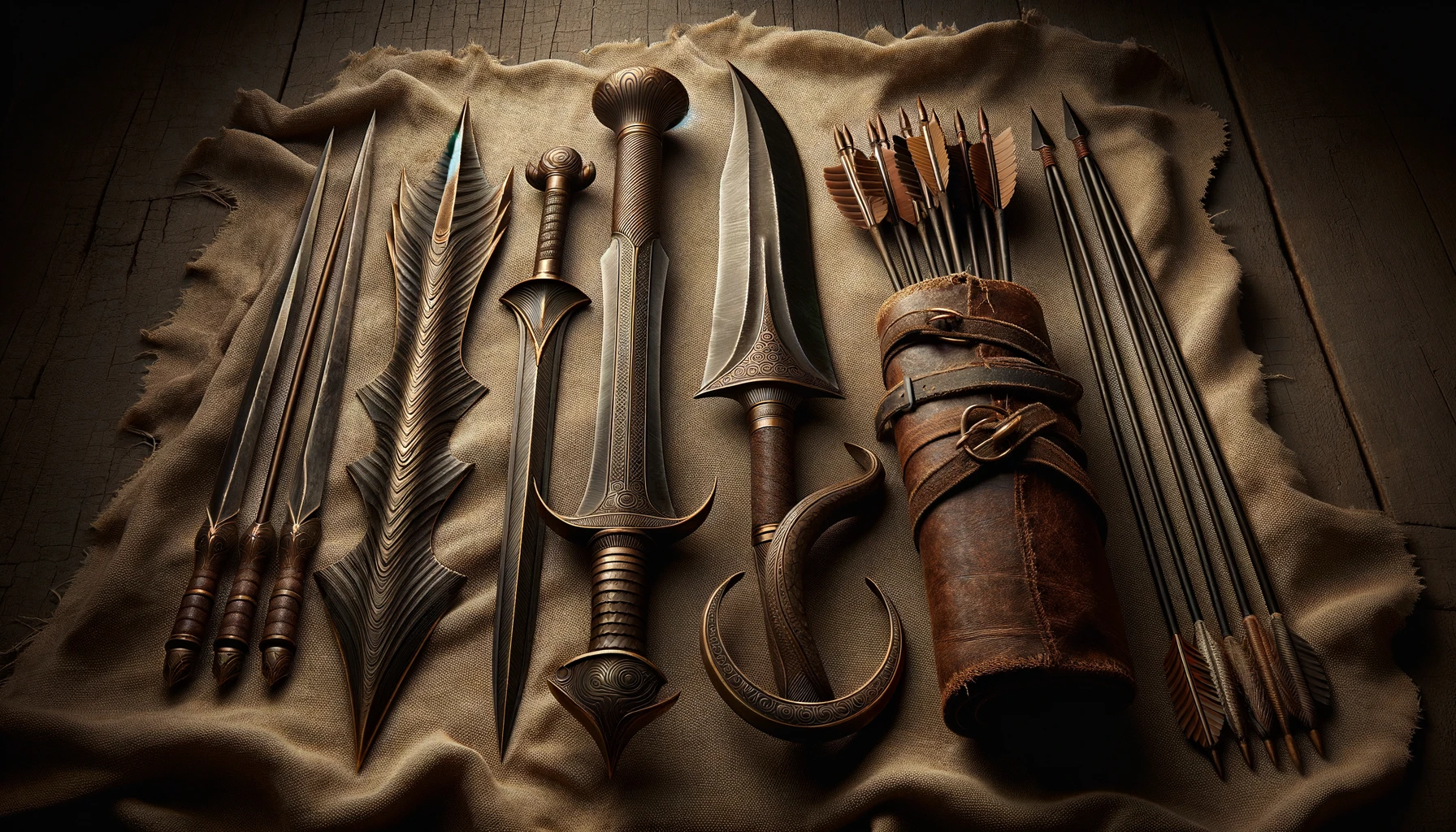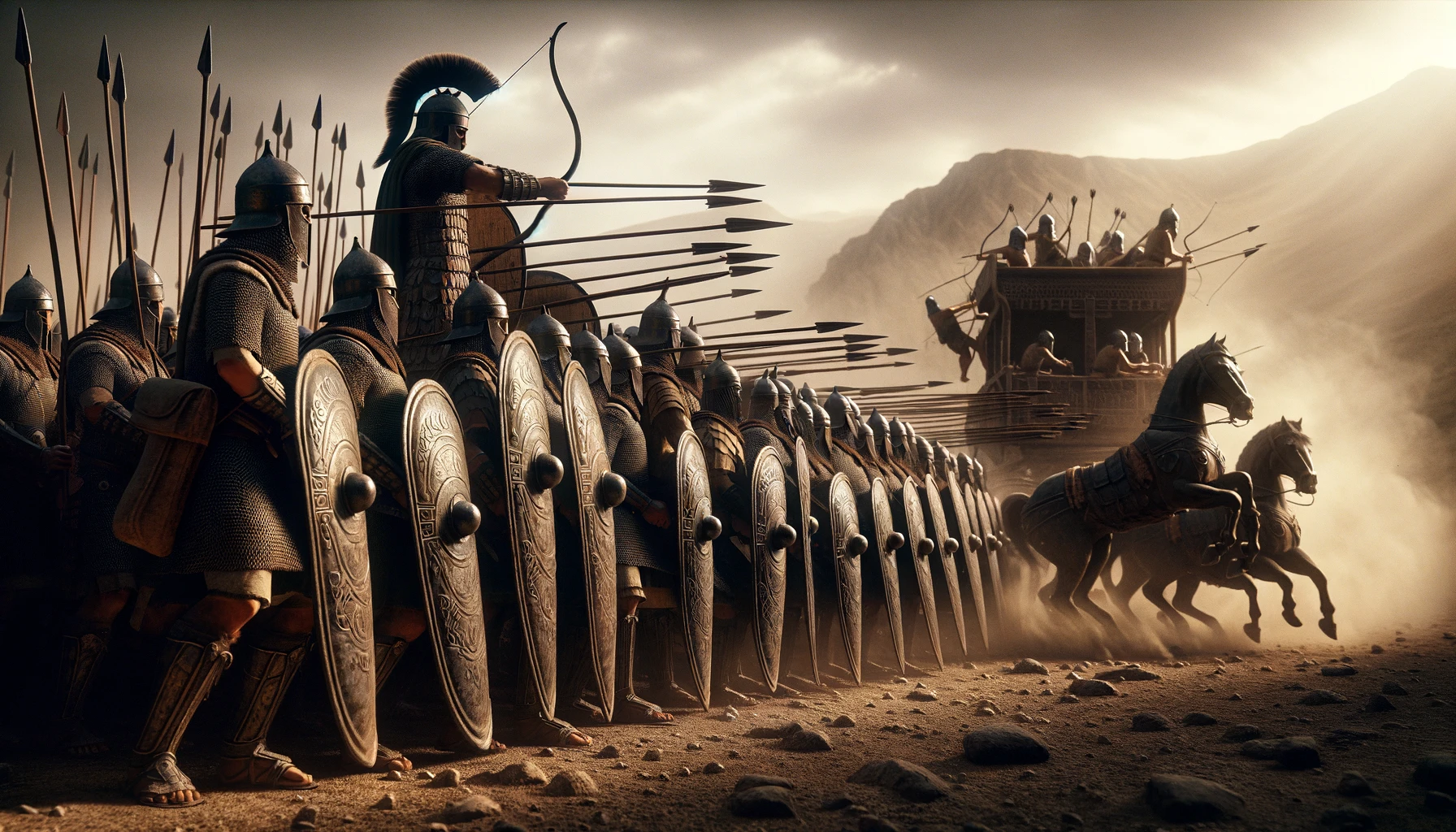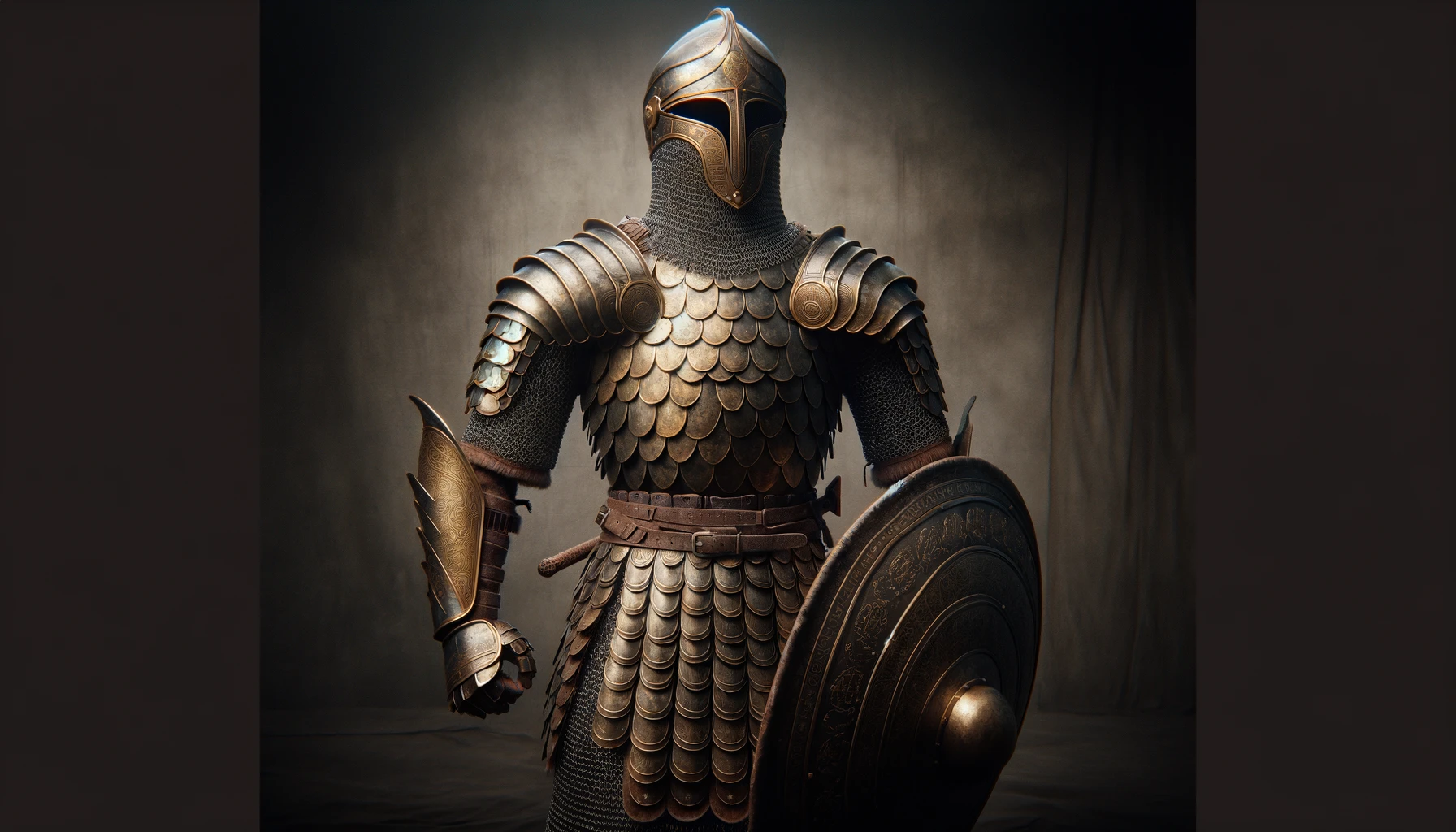INTERACTION
One of the most frequently asked questions about warfare and military tactics in Mesopotamia revolves around the weapons and military technology employed by the ancient armies of this region.
The weapons used by Mesopotamian soldiers evolved, but some of the most common included:

- Spears and Javelins: These were among the earliest and most fundamental weapons, consisting of a wooden shaft with a sharpened metal or stone point. They could be used for thrusting or throwing.
- Swords and Daggers: Different types of swords and daggers were used for close-quarters combat, such as the curved khopesh sword and various straight-blade designs made of bronze or iron.
- Bows and Arrows: Archery was an essential aspect of Mesopotamian warfare, with both composite recurve bows and simpler self-bows being utilized. Arrowheads were made from stone, bronze, or iron.
- Slings: Slingers were an important component of Mesopotamian armies, using leather or woven slings to hurl stones and other projectiles with great force and accuracy.
| Weapon | Material | Range |
|---|---|---|
| Spear/Javelin | Wood, Stone, Bronze, Iron | Melee, Throwing |
| Sword/Dagger | Bronze, Iron | Melee |
| Bow and Arrow | Wood, Stone, Bronze, Iron | Long-range |
| Sling | Leather, Woven Materials | Long-range |
In terms of military technology, the Mesopotamians made significant advancements in areas such as:
- Siege Warfare: They developed various siege engines, including battering rams, siege towers, and primitive catapults for breaching fortified cities.
- Fortifications: Massive defensive walls, towers, and moats were constructed to protect cities and strategic locations.
- Chariots: The use of horse-drawn chariots, often equipped with archery crews, became a formidable force on the battlefield.
- Metallurgy: The ability to work with metals like bronze and iron allowed for the production of more effective weapons and armor.
It’s important to note that the sophistication of Mesopotamian weapons and military technology varied greatly across different periods and civilizations within the region.
Battle Tactics and Strategies of Mesopotamian Armies

Another common question revolves around the battle tactics and strategies employed by the ancient Mesopotamian armies. While these evolved over time, some notable aspects include:
Infantry Tactics
- Phalanx Formation: Heavily armed infantry formations, often with interlocking shields and spears, were used to create an impenetrable wall against enemy attacks.
- Archers and Slingers: Ranged units played a crucial role, softening enemy defenses with a barrage of arrows and sling stones before melee combat.
- Light Infantry: Lightly armed and mobile troops were employed for skirmishing, flanking maneuvers, and pursuit of retreating enemies.
Cavalry Tactics
- Chariot Warfare: Chariots, drawn by horses or onagers (wild asses), provided mobile archery platforms and were used for shock tactics and pursuit.
- Mounted Archers: As horseback riding became more prevalent, mounted archers were integrated into armies for increased mobility and ranged attack capabilities.
Siege Tactics
- Siege Engines: Battering rams, siege towers, and early catapults were employed to breach city walls and fortifications.
- Siegecraft: Tactics like mining, tunneling, and the construction of ramps and earthworks were used to undermine and gain access to fortified positions.
Strategies
- Divide and Conquer: Larger empires often employed strategies of dividing enemy alliances and conquering territories piecemeal.
- Psychological Warfare: Tactics such as displays of overwhelming force, intimidation, and propaganda were used to demoralize enemies and encourage surrender.
- Diplomacy and Alliances: Strategic alliances, treaties, and diplomatic efforts were sometimes pursued to avoid costly conflicts or gain allies against common foes.
It’s worth noting that the effectiveness of these tactics and strategies varied greatly depending on the specific period, civilization, and available resources within Mesopotamia.
Armor and Protective Gear of Mesopotamian Soldiers
Another frequently asked question pertains to the armor and protective gear worn by Mesopotamian soldiers during warfare. While the materials and designs evolved over time, some common elements included:
Body Armor
- Scale Armor: Overlapping scales or plates of bronze or iron were sewn onto a leather or cloth backing, providing flexible yet effective protection for the torso and limbs.
- Lamellar Armor: Similar to scale armor but with individual plates laced together in horizontal rows, offering greater flexibility and coverage.
- Bronze or Iron Cuirasses: Solid breastplates or corselets made of bronze or iron were worn by elite warriors and commanders for added protection.
Helmets
- Bronze Helmets: Helmets made of bronze, often with cheek guards and decorative elements, were used to protect the head and face from blows and projectiles.
- Leather or Cloth Caps: Simpler helmets or caps made of leather or thick cloth were also employed, providing basic head protection.
Shields

- Tower Shields: Large, rectangular shields made of wood and leather, sometimes reinforced with bronze, were carried by infantry for maximum coverage.
- Round Shields: Smaller, circular shields made of wood and leather were favored by archers and lighter troops for increased mobility.
Other Protective Gear
- Greaves: Shin guards made of bronze or leather were worn to protect the lower legs from slashing attacks.
- Arm Guards: Similar to greaves, arm guards provided protection for the forearms and wrists.
The use of armor and protective gear was often determined by the soldier’s rank, role, and available resources, with higher-ranking warriors and elite units receiving the most comprehensive protection.
| Armor Type | Materials | Protection Area |
|---|---|---|
| Scale Armor | Bronze, Iron, Leather, Cloth | Torso, Limbs |
| Lamellar Armor | Bronze, Iron, Leather, Cloth | Torso, Limbs |
| Cuirasses | Bronze, Iron | Torso |
| Helmets | Bronze, Leather, Cloth | Head, Face |
| Shields | Wood, Leather, Bronze | Full Body |
| Greaves | Bronze, Leather | Lower Legs |
| Arm Guards | Bronze, Leather | Forearms, Wrists |
It’s important to note that the availability and sophistication of armor and protective gear varied greatly across different periods and civilizations within Mesopotamia, reflecting the technological advancements and resources of each era.
Conclusion
The study of warfare and military tactics in ancient Mesopotamia offers a fascinating glimpse into the evolution of armed conflict and the remarkable ingenuity of the region’s civilizations. From the earliest use of spears and slings to the development of sophisticated siege engines and fortifications, the Mesopotamians continually adapted and innovated to gain an edge over their adversaries.
While the specific weapons, armor, and tactics varied across different periods and cultures, certain principles remained constant. The importance of ranged warfare, the strategic use of terrain and fortifications, and the incorporation of mobile forces like chariots and cavalry all played crucial roles in shaping the outcomes of battles and campaigns.
Furthermore, the Mesopotamians recognized the value of psychological warfare, diplomacy, and strategic alliances, demonstrating a nuanced understanding of the multifaceted nature of conflict. Their ability to combine military might with political maneuvering often proved decisive in establishing and maintaining control over vast territories.
As we reflect on the rich military history of ancient Mesopotamia, we are reminded of the enduring human drive for technological advancement and the constant pursuit of more effective means of warfare. The lessons learned from this era continue to resonate today, serving as a testament to the ingenuity and resilience of the human spirit in the face of adversity and conflict.
While warfare remains an unfortunate reality in our modern world, the study of ancient Mesopotamian military tactics and strategies offers valuable insights into the complex interplay of strategy, technology, and human ingenuity that has shaped the course of history. It is a reminder that even in the darkest moments, the human capacity for innovation and adaptation can pave the way towards progress and, ultimately, a more secure and peaceful existence for all.

